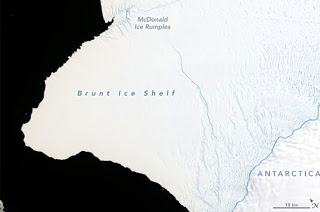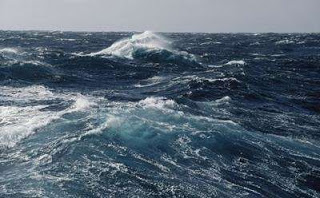Plastic Saturates Life in Mariana’s Trench, Sterile Killer Whales, Squid Protein and Plastic Pollution, Belize’s Great Blue Hole Revealed and more…
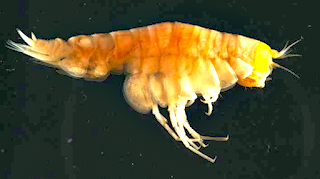 Alan Jamieson remembers seeing it for the first time: a small, black fiber floating in a tube of liquid. It resembled a hair, but when Jamieson examined it under a microscope, he realized that the fiber was clearly synthetic—a piece of plastic. And worryingly, his student Lauren Brooks had pulled it from the gut of a small crustacean living in one of the deepest parts of the ocean.
Alan Jamieson remembers seeing it for the first time: a small, black fiber floating in a tube of liquid. It resembled a hair, but when Jamieson examined it under a microscope, he realized that the fiber was clearly synthetic—a piece of plastic. And worryingly, his student Lauren Brooks had pulled it from the gut of a small crustacean living in one of the deepest parts of the ocean.
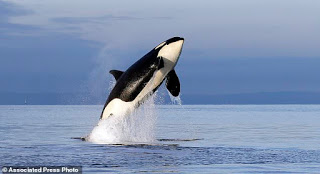 Britain’s only group of killer whales will die out because the females have been made sterile by chemical pollutants, scientists have said. Found off the west coast of Scotland, the eight whales are the UK’ s only resident orca population have not produced a calf in 25 years. The researchers believe that this is because they have been exposed to catastrophic levels of chemicals that interfere with their hormones. The pod are now believed to be doomed to extinction because these chemicals have destroyed their ability to reproduce.
Britain’s only group of killer whales will die out because the females have been made sterile by chemical pollutants, scientists have said. Found off the west coast of Scotland, the eight whales are the UK’ s only resident orca population have not produced a calf in 25 years. The researchers believe that this is because they have been exposed to catastrophic levels of chemicals that interfere with their hormones. The pod are now believed to be doomed to extinction because these chemicals have destroyed their ability to reproduce.
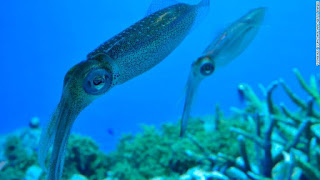 More than 8 million tons of plastic ends up in our oceans each year, killing marine life and damaging ecosystems. But the same seas might also hold the key to reducing plastic pollution. Proteins found in squid can be used to create sustainable alternatives to plastics, according to a report published in Frontiers in Chemistry on Thursday. Squid grasp their prey using suction cups on their tentacles and arms. The cups are equipped with sharp “ring teeth” that hold the food in place. The teeth are made from proteins that are similar to silk, and these have become the subject of scientific interest in the last few years.
More than 8 million tons of plastic ends up in our oceans each year, killing marine life and damaging ecosystems. But the same seas might also hold the key to reducing plastic pollution. Proteins found in squid can be used to create sustainable alternatives to plastics, according to a report published in Frontiers in Chemistry on Thursday. Squid grasp their prey using suction cups on their tentacles and arms. The cups are equipped with sharp “ring teeth” that hold the food in place. The teeth are made from proteins that are similar to silk, and these have become the subject of scientific interest in the last few years.
4. Iceberg twice the size of NYC set to break off from Antarctica
Scientists warned Sunday that a massive iceberg will soon calve — or break off — from Antarctica’s Brunt Ice Shelf and they’re increasingly concerned about the “uncertain future” it creates for future research opportunities there. The iceberg is expected to be about twice the size of New York City, according to NASA scientists, who have observed cracks growing across the ice shelf in recent years. “It is not yet clear how the remaining ice shelf will respond following the break, posing an uncertain future for scientific infrastructure and a human presence on the shelf that was first established in 1955,” the scientists wrote.
Florida is reportedly moving toward a statewide ban on “chumming,” or the practice of fishermen dumping blood into the ocean along beaches to lure sharks. The Fish and Wildlife Conservation Commission is expected to implement the ban later this month, The Associated Press reported Tuesday. The technique involves scattering bloody fish guts and oil into the water to produce a slick surface and lure sharks closer to baited hooks. The regulators note that the sharks could be lured closer to swimmers.
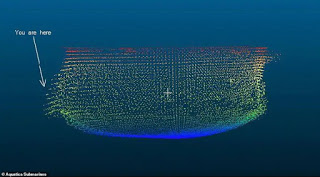 A submarine mission to the bottom of Belize’s Great Blue hole has generated the first-ever map of what it looks like on the inside. Sonar scans were taken of one of the world’s largest sinkholes, which measures 984 feet (300m) across and roughly 410 feet (125m) deep. The three-week mission let researchers collect enough data to generate a 3D picture as well as images of never-before-seen details from its depths. That includes stalactites, mineral formations shaped like icicles near the bottom that are encrusted with marine growth, as well as a conch ‘graveyard’ created by thousands of the shellfish falling into the chasm.
A submarine mission to the bottom of Belize’s Great Blue hole has generated the first-ever map of what it looks like on the inside. Sonar scans were taken of one of the world’s largest sinkholes, which measures 984 feet (300m) across and roughly 410 feet (125m) deep. The three-week mission let researchers collect enough data to generate a 3D picture as well as images of never-before-seen details from its depths. That includes stalactites, mineral formations shaped like icicles near the bottom that are encrusted with marine growth, as well as a conch ‘graveyard’ created by thousands of the shellfish falling into the chasm.

